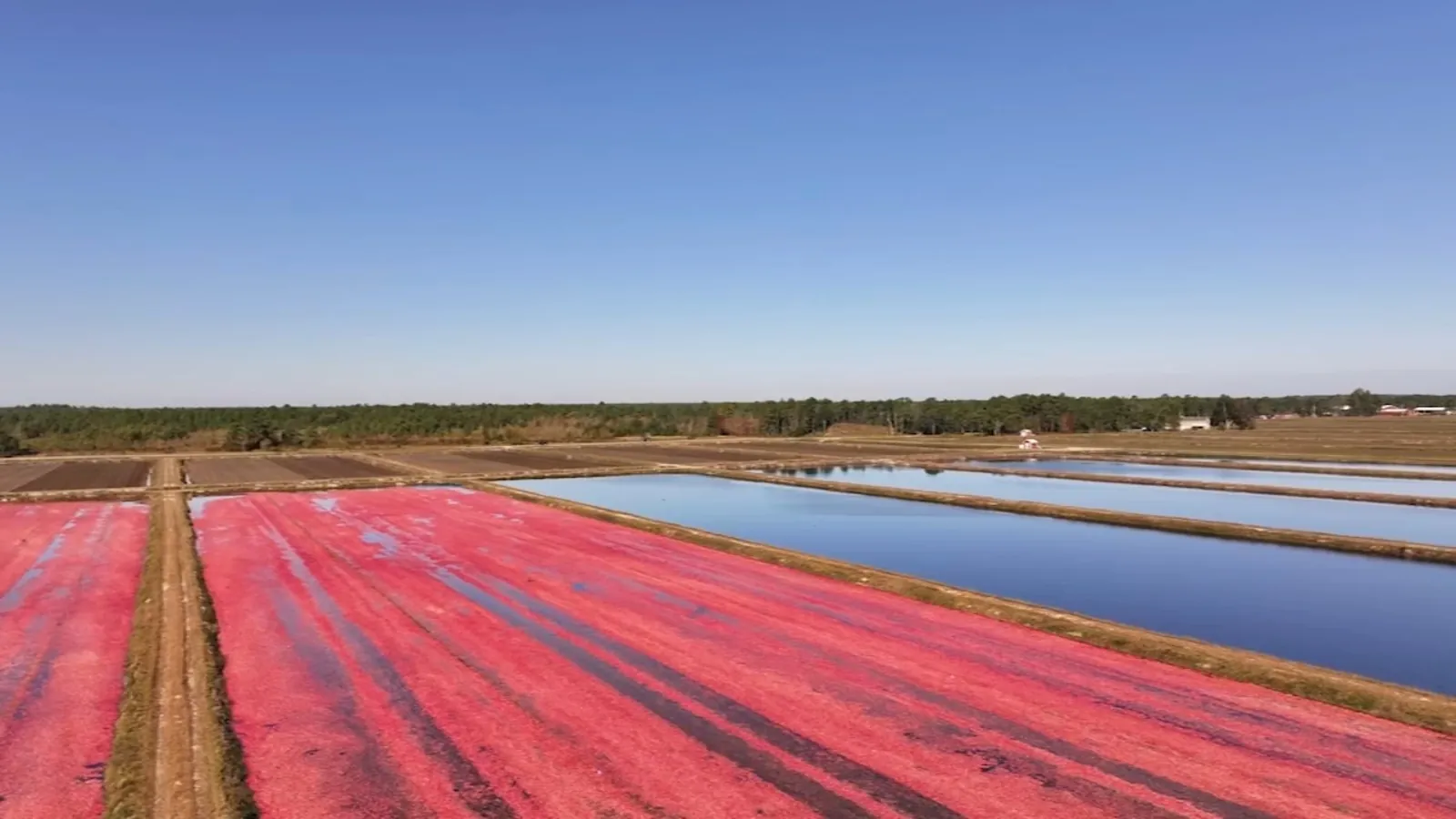As you stroll through the serene bogs near Chatsworth, Burlington County, you’ll come across the sight of cranberries floating effortlessly. However, the peaceful ambiance is interrupted by the sound of loud blowers that come in to push these little berries towards their final destination.
During our visit to Pine Island Cranberry Company, Stefanie Haines graciously showed us the harvest in action. It was an exciting opportunity to witness the skilled workers harvesting the cranberries, and we were grateful for the chance to see the process up close.
Growing berries runs in her family for five generations now, with her being the latest to continue the tradition in New Jersey.
According to Haines, the Pine Barrens is a distinct ecosystem where only a limited number of crops can thrive. Due to the acidic and sandy soil, cranberries and blueberries are among the few crops that can be grown in this area. However, Haines emphasizes that careful and precise cultivation methods are crucial in order to preserve the delicate balance of this unique ecosystem.
Once the cranberries are ripe and plump, the bogs are deliberately flooded to facilitate the berry harvesting process. A specialized machine is then utilized to gently shake the cranberries loose, allowing them to naturally float to the surface. This method ensures that the cranberries are not damaged or bruised during the harvesting process, preserving their overall quality and freshness.
Afterwards, the buoyant berries are collected and consolidated at a single end of the marsh. From there, they’re extracted and loaded onto a truck using a pump.
According to Haines, after the berries go through the berry pump at the bog-side cleaner and into the truck, they are transported to the Ocean Spray receiving station in Chatsworth. From there, Ocean Spray takes over and handles the rest. The berries may be frozen or processed, but the specifics are taken care of by Ocean Spray.
At the Pine Island Cranberry Company, you’ll find a diverse range of cranberry varieties being grown – approximately eight to be exact.
The Demoranville cranberries, which are one of the larger varieties grown, were harvested on this particular day.
According to Haines, the farm typically gathers approximately 30 million pounds of cranberries annually from the bogs.
New Jersey is considered to be the third-largest cranberry producer in the United States, as reported by the state.
In the previous year, sales worth $20 million were recorded from the Garden State.
Autumn is a time of festivity for the tangy fruit, as numerous festivals are held in its honor every year.
According to Haines, cranberries hold a special place in many families’ traditions, but what people may not realize is that this tradition often stems from a long line of multigenerational farming. “Cranberries are such a part of everybody’s family tradition and I don’t think people realize that it stems from another family tradition,” Haines explained. It’s clear that the cultivation and production of cranberries have been passed down from generation to generation, making it an integral part of many farming families’ legacies.
According to Haines, the weather has been favorable thus far, but they are hoping for a few colder nights to aid in the ripening of the berries.
It’s anticipated that the harvesting season will continue until the conclusion of October.
Read More:
- Former Hamas leader threatens ‘global day of Jihad’ Police on alert across state
- A Pennsylvania man sentenced to 25 years for murdering a mother of two at a motel in New Jersey.



